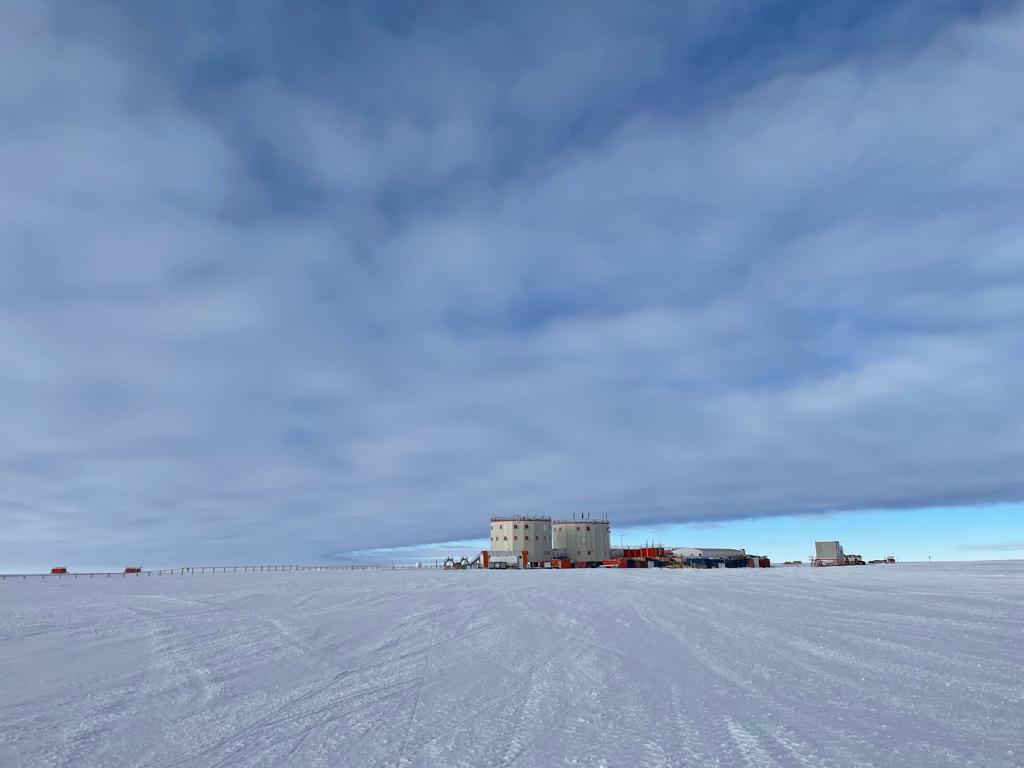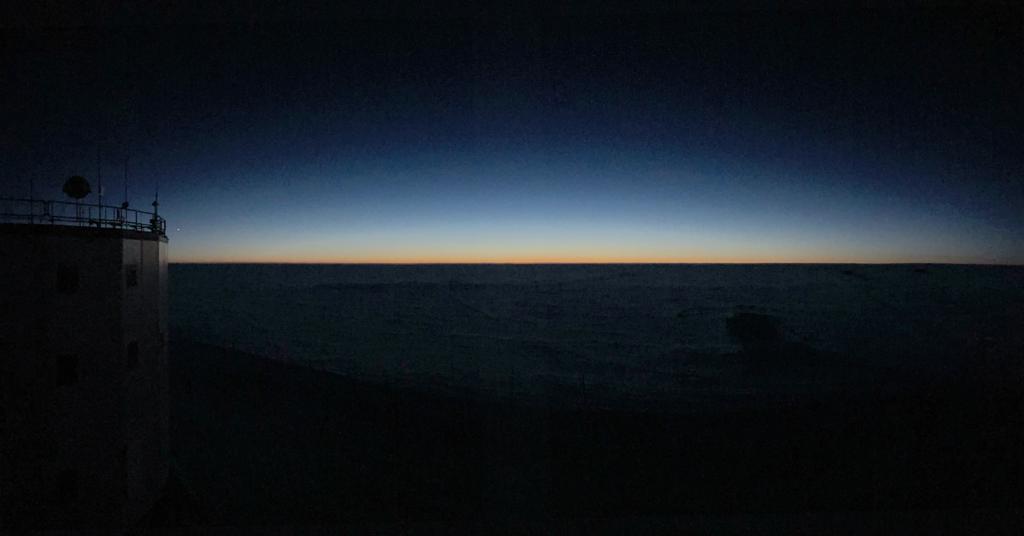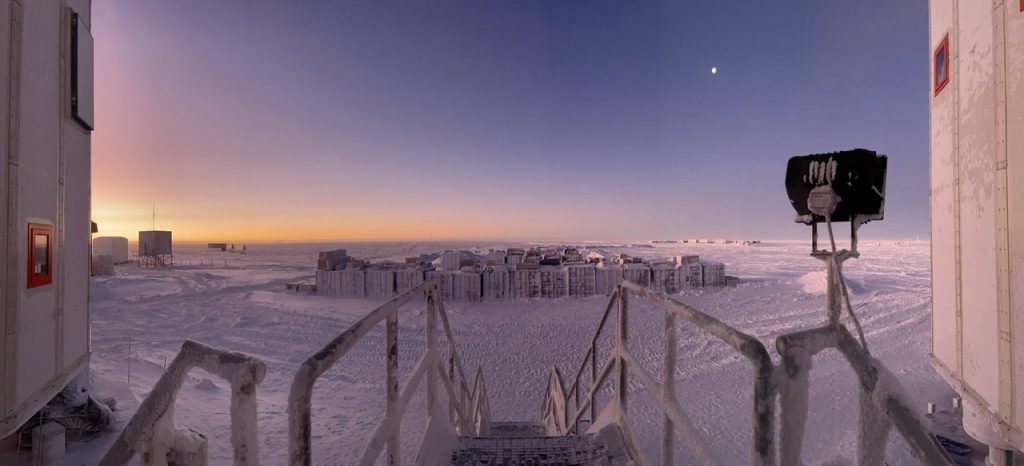Dr. Hannes Hagson is the ESA-sponsored medical doctor from Sweden spending 12 months at Concordia research station in Antarctica for the 2021-22 season. He facilitates a number of experiments on the effects of isolation, light deprivation, and extreme temperatures on the human body and mind.
Concordia Station, Antarctica 24th September 2022
Hello one and all!
First, let me apologise for the delay in getting this blog written. I promised to return to you at some point once our winter isolation had started, and, whilst I suppose I technically have not broken that promise, the spirit of it seems somewhat damaged, given winter has been going for almost 8 months and we celebrated midwinter three months ago here on Dome C. It has been a very busy winter in terms of workload, but also I have struggled to put into words many of the experiences of Concordia. Nonetheless, let me take you back to February 7th, when the sun was shining 24/7 and the station was still buzzing and busy.

It was the day of the last flight out from Dome C before the start of winter. Anticipation had been building over some days as more and more people were leaving with several flights departing, until finally it was just the Winterover crew and a few others left. As the final flight landed I remember starting to really feel the sense of impending isolation. This was the absolute last moment to change one’s mind. In an hour the plane would be gone and with it any chance of getting out of Concordia for 9 months of cold and darkness. Despite feeling absolutely committed to the mission and relatively at peace with the nature of existence here, strange thoughts of unexpected illness and accidents flashed through my mind. Which is why I was surprised, when the flight took off with the last of the summer crew after hugs goodbye, that my main feeling was relief. Relief that the ‘real’ mission had finally begun.
Since then there have been several key milestones. The sun set for the final time at the beginning of May to signal the start of the long, harsh, polar night. We celebrated midwinter late June, with a series of nice dinners and some of the good wine, including a Swedish midsummer feast which was appreciated by all (but most of all by me I would venture)! We have taken part both in the Antarctic winter games and the Antarctic film festival, and we have grown together as a crew during this long isolation.

It is difficult to verbalise exactly how strange it is to live here in complete isolation for such a long time. Whilst large numbers of people (including myself) have experienced isolation of one form or another during the Covid-19 pandemic, the otherworldly remoteness and physical inability to escape Concordia is something else entirely. Though not actually on another planet, one might as well be (the fact that the station architecture looks like it is from some 80s space sci-fi helps!)
Work here is hard and plentiful and one is by default mission-focussed, but sometimes, sitting in my ESA lab, staring out over an endless sea of ice toward a dark pink/blue horizon, knowing the outside temperature is -79 degrees Celsius and that we are as far away from civilised society as one can be, I sometimes get overwhelmed by the bizarre circumstance I find myself in.
It is also interesting how time has both the quality of passing very quickly and extremely slowly at the same time here at Concordia. Some months have disappeared, without trace, in a flash, whilst some single days stand out like supernovae in distant galaxies. Currently, on the homestretch, I am reminded of the last few kilometers when running a marathon. Every single step forward seems extremely long, yet it also brings the finish distinctly nearer, like a telephoto zoom.
The polar night, when the sun does not rise at all, which here at Dome C lasted from 3rd May to 10th August, exemplifies this feeling of time constriction and dilation. Over three months of darkness and extreme, otherworldly cold has the ability of seeming endless, but also like a single, albeit long, night. The day of sun return, in contrast, seems filled with odd minutiae. Waiting expectantly for the first actual glimpse of a ray of sun, photons flooding over the horizon, an event so mundane in our normal lives but here taking on the meaning of actual rebirth.

Now, with under six weeks to go until the first flight arrives, thoughts of the base have turned to preparing the station for the arrival of the summer crew. We are in the middle of our big ‘spring clean’ of the whole station complex, and individually we are preparing for the handover to our successors of the DC19 crew, whilst normal scientific and technical work of course continues. October looks set to be incredibly busy, but with the reward of fresh food looming in November no one is too bothered by this…
Summer is coming!




Discussion: 5 comments
Thank you for sharing! What an amazing experience.
Hi there. Are there women or just men there?
Definitely women too, read Beth’s or Carmen’s blog entries for example.
Hello! I’m Margherita, a medicine student in Pisa’s university, I’m attending the 5th year.
During the antartic summer, is it possibile to do an Erasmus traineeship following your reaserch ?
I would like to write my degree theses on the quality of sleep in extreme conditions, I’m asking for that reason and also because I think it would be a wonderful opportunity for my personal and professional growth.
Thank you
Hi Margherita, I am not sure this would be possible, but you could try! Send me an email at jharrod@esa.int and I will forward it onto somebody more knowledgeable.